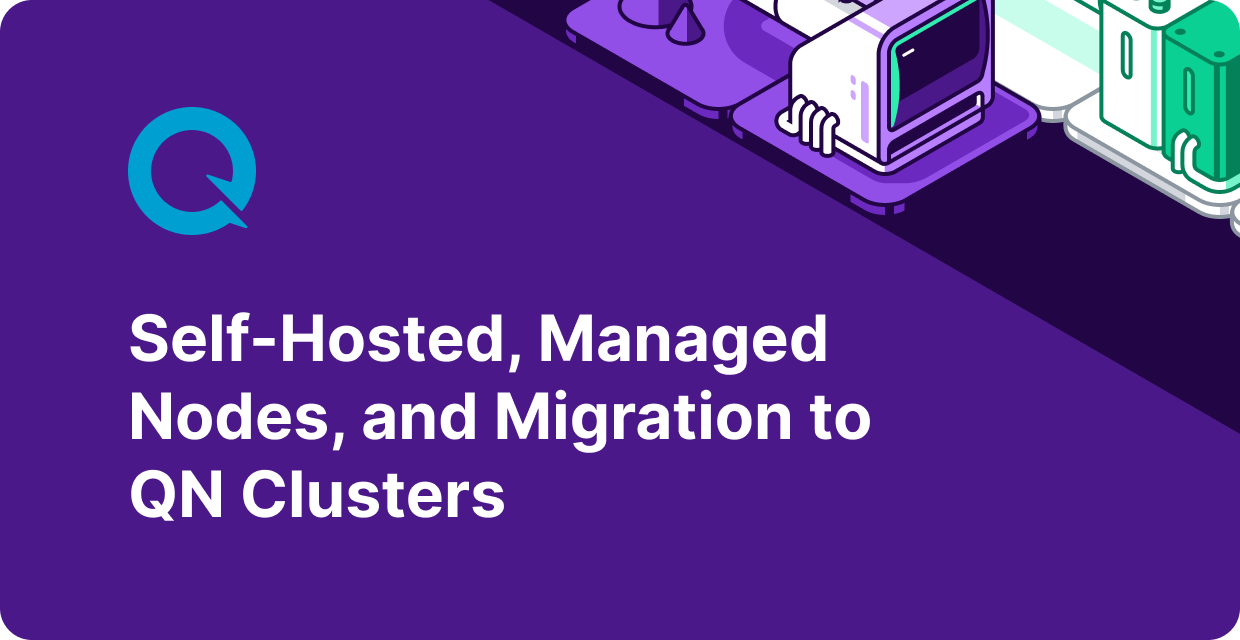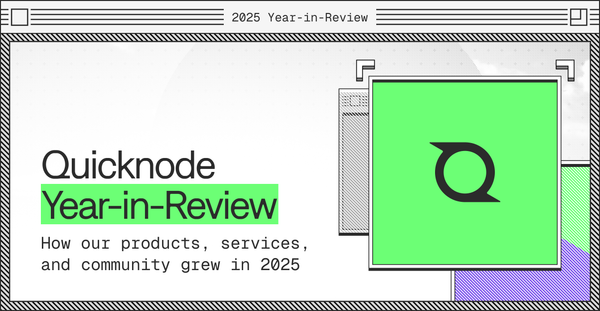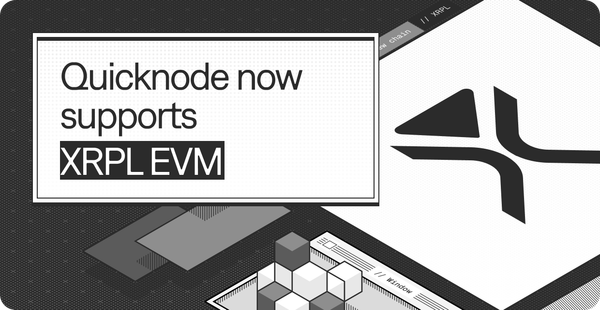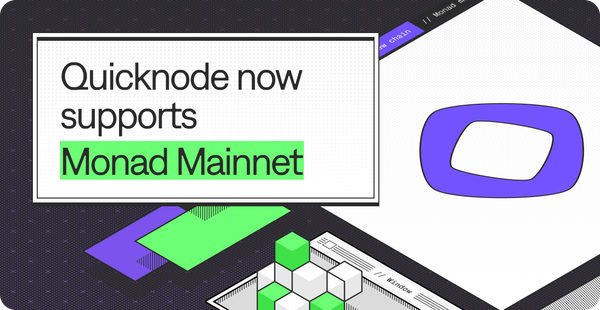QuickNode Clusters 101: Self-Hosted Nodes or Managed Nodes and How to Migrate?
Explore why self-hosted nodes may no longer be feasible and how QuickNode’s fully managed nodes offer a superior alternative.

Web3 i.e. building a functionality or solution on top of a blockchain is impossible without a node infrastructure. They upkeep blockchain integrity by being a single source of truth. Nodes also transport data and more importantly they gatekeep the blockchain network from bad actors.
Every dApp, protocol, blockchain game, and web3 solution can be compromised if they have a poor node infrastructure. So, what do they do?
Traditionally, many have relied on self-hosted nodes but the complexity and resource-intensiveness involved in this approach has made it infeasible. This has given rise to infra providers like QuickNode who offer off-the-shelf and fully managed nodes.
This blog will help you understand if managed nodes are a better choice and how best to migrate to node infra providers from a self-hosted setup.
What are Blockchain Nodes? Why are They Important?
Blockchain nodes are any computer or server that runs a dedicated software, thereby maintaining a copy of the blockchain and validating transactions.
Types of Blockchain Nodes
Commonly, there are three types of blockchain nodes:
- Full nodes store all blockchain data of the last 128 blocks. They run validator software, thereby validating transactions and executing smart contracts.
- Light nodes store only block headers, containing timestamps and the hash of the previous block. They’re used to verify the validity of blockchain data.
- Archive nodes store the entire blockchain history and state changes since the genesis block. They’re typically used in block explorers or onchain analytics.
Importance of Blockchain Nodes
A functioning network of nodes is essential for blockchain to work and here are five reasons why:
- Nodes communicate in a peer-to-peer way with other nodes to form a blockchain’s single source of truth.
- They verify the validity of the blocks and penalize validators for faulty or invalid blocks.
- Nodes participate in the consensus mechanism of the blockchain and deter sybil attacks.
- By transparently storing blockchain data, nodes enable the functioning of web3: dApps, DeFi protocols, onchain games, decentralized social media, etc.
- Nodes facilitate governance, allowing stakeholders to vote on upgrades and protocol changes.
Understanding Node Management Types: Self-Hosted Nodes vs Managed Nodes
We now know that nodes are a critical piece of the blockchain infra. This means latency-free and high-uptime nodes are a must for any web3 app to work.
Two ways you can go about setting up the node network:
- Self-hosted nodes are those set up and managed in-house, offering full control.
- Managed nodes are provided by third-party node infra providers who handle the setting up and management of the nodes.
Here’s a quick comparison of both the methods:

Managed nodes outperform self-hosted nodes across all five metrics, making them apt for web3 firms seeking reliability, performance, and ease of use.
Introducing QuickNode Clusters
QuickNode Clusters are enterprise-grade managed node solutions designed for high-performance blockchain operations.
The global availability of nodes allows you to deploy your operations closer to your users, reducing latency and improving user experience.
Here are five reasons why you should consider QuickNode Cluster for your web3 product or solution:
- Multi-node redundancy: Each cluster comprises two or more nodes of the same blockchain, operating in a mirrored configuration within a single region.
- Dynamic scaling: Automatically adjusts to handle varying workloads, from routine operations to high-intensity DeFi trading algorithms.
- Fixed pricing mode: QuickNode offers predictable and fixed monthly costs regardless of usage, simplifying budgeting and resource allocation.
- Automated maintenance: Continuous updates, patches, and optimizations without service interruption plus 24/7 expert support available.
- Customization: Tailored node infra to meet specific blockchain network requirements and application needs.
The Migration Process: From Self-Hosted to QuickNode Clusters
Having understood the value of Clusters or managed nodes, in general, it is easier for new dApps and protocols to contact QuickNode and get their node infra setup.
Here is a quick sneak peek into our professional services team’s approach to helping clients effortlessly integrate & migrate to QuickNode’s services:

However, for existing web3 apps and products with a native node infrastructure, switching to a managed node setup might seem overwhelming.
To help ease the process, here is a quick five-step guide:
Step 1: Pre-Migration Assessment And Technical Preparation
Begin by auditing your current node setup, including configurations, performance metrics, and any customizations. Analyze performance metrics such as average and peak TPS, API request patterns, and sync times. This data will serve as a baseline for comparison and help identify areas for improvement.
Also, document all existing node configurations to prevent overlooking critical functionalities during the transition.
Finally, identify any custom setups or special requirements in your current infrastructure. This includes custom forks, modifications to node software, special indexing needs, or regulatory compliance requirements.
Step 2: Setting Up Quicknode Clusters
Consider factors such as cluster size, region selection for optimal latency, and whether you need mainnet, testnet, or custom network setups.
Then, integrate QuickNode with your existing systems and workflows. This step typically involves updating API endpoint references in your applications, modifying monitoring and alerting systems, and adapting CI/CD pipelines to incorporate QuickNode deployments.
Step 3: Data Migration
Choose a secure method for transferring blockchain data to QuickNode Clusters. This could involve:
- Exporting data: Use your current node's API to export any necessary data.
- Importing data: Utilize QuickNode’s API to import the data into your new cluster.
Also, ensure that all services dependent on the blockchain nodes are updated to point to the new QuickNode endpoints.
For large datasets, consider parallel transfers or incremental migration to minimize downtime. Ensure data integrity by verifying checksums throughout the process. After migration, validate the completeness and accuracy of the data, addressing any discrepancies immediately.
Step 4: Testing And Validation
Before fully switching over, conduct thorough testing on the QuickNode cluster. Check for:
- Performance: Ensure that the response times meet your application's requirements.
- Functionality: Verify that all features and functionalities work as expected with the new setup.
You can do this by setting up a parallel testing environment to mirror your production setup. Once testing is complete and you are satisfied with the performance, gradually transition traffic from your self-hosted nodes to the QuickNode cluster.
Step 5: Use Quicknode Support
Refer to QuickNode’s extensive documentation for guidance on configuration, integration, and troubleshooting. Ensure your team is familiar with QuickNode’s support resources.
If issues arise that you cannot resolve internally, engage QuickNode’s 24/7 real-time support team.
Future-Proof Your Blockchain Infrastructure with QuickNode
The value of a robust and scalable node infrastructure cannot be overstated. While setting it up in-house and maintaining it is possible, the cost of the same (monetary and otherwise) is extremely significant in contrast to the level of reliability it provides.
Managed nodes coming with enterprise-grade performance, automated maintenance, and 24/7 expert support are surely the better bet. QuickNode Clusters is an industry-standard offering in this facet and opting in means you can finally redirect your focus on solving problems, business logic, and growing web3.

About QuickNode
QuickNode is building infrastructure to support the future of Web3. Since 2017, we've worked with hundreds of developers and companies, helping scale dApps and providing high-performance access to 40+ blockchains. Subscribe to our newsletter for more content like this, and stay in the loop with what's happening in web3!





